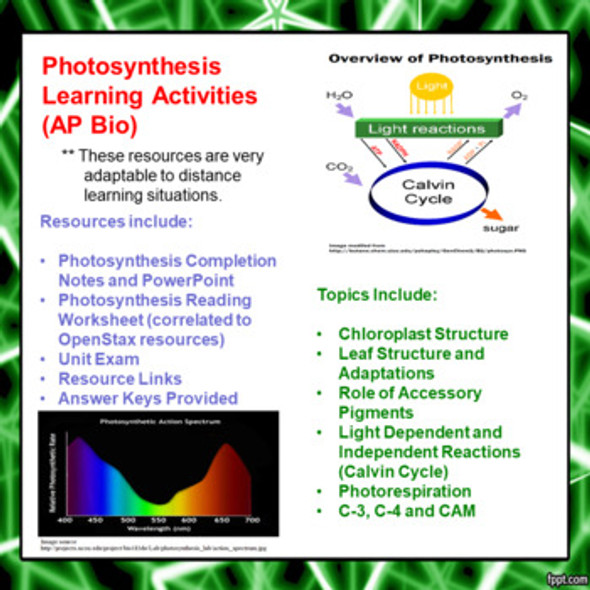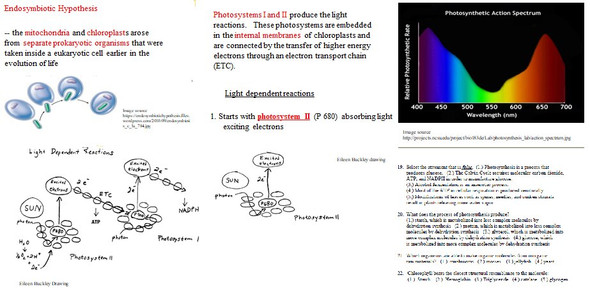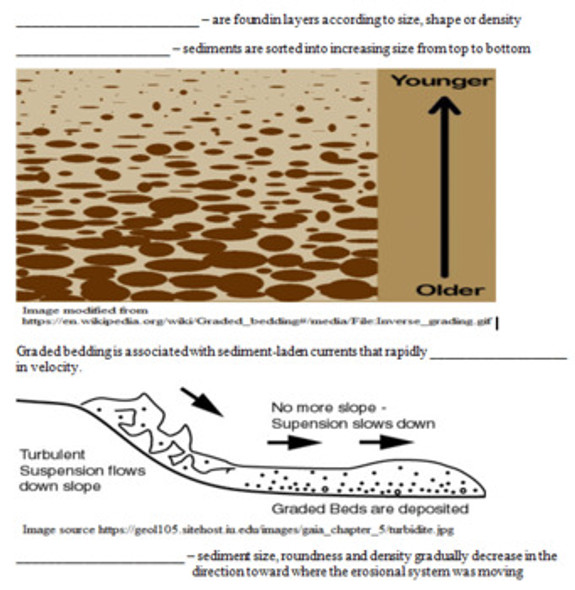Description
This zip file contains 9 different activities which can be used to compose a unit for biology students introducing them to photosynthesis. The total package contains 30 pages of student activities and 95 PowerPoint slides. While these lessons were originally designed to correlate to the performance indicators of the New York State Living Environment/Biology curriculum, the components of this lesson may be easily used in other biology courses as well. Many documents are in both word and pdf form to allow edits for your particular needs. These documents are well suited for use in distance learning environments.
It contains the following items:
- Marzano self assessment scale for students specific to this unit with learning goals, NGSS and Common Core Standards for reading, writing and mathematics (2 pages)
- Cloze notes handout for students (8 pages)
- PowerPoint to accompany the cloze notes (36 frames including a bell ringer with answers)
- Photosynthesis Simulation Lab activity with answer key (simulator is in link and in the file) (8 pages)
- Chromatography Lab activity with answer key (provides a safe option for avoiding the use of petroleum ether and acetone) (4 pages)
- Photosynthesis Exam with key (29 questions) (4 pages)
- Photosynthesis Practice Exam for students with key (4 pages)
- Photosynthesis Jeopardy Game in PowerPoint format (56 slides)
Learning Goals
Upon the completion of this unit the student will be able to:
1. define the term autotrophic nutrition.
2. describe the structure of the chloroplast and how these structures relate to their function.
3. write a summary equation for photosynthesis.
4. list the wavelengths of light that are most effective for photosynthesis.
5. describe the role of accessory pigments in plants.
6. label the following structures in a plant leaf cross section and state their functions; upper epidermis, palisade layer, spongy layer, vascular bundles, lower epidermis, guard cells, stomata, and the cuticle.
7. explain what happens when chlorophyll or accessory pigments absorb light energy.
8. discuss the basic purpose of the light dependent and light independent reactions of photosynthesis.
9. list several factors which improve the efficiency of the photosynthetic process.
10. discuss the process of chromatography in reference to the separation of plant pigments.
11. state several uses for the glucose formed in photosynthesis.
NGSS Learning Standard
Students who demonstrate understanding can:
HS-LS1-5. Use a model to illustrate how photosynthesis transforms light energy into stored chemical energy.
Common Core State Standards Connections:
ELA/Literacy
SL.11-12.5 Make strategic use of digital media (e.g., textual, graphical, audio, visual, and interactive elements) in presentations to enhance understanding of findings, reasoning, and evidence and to add interest.
Mathematics
MP.4 Model with mathematics.
NY Living Environment Core Curriculum
Performance Indicator 5.1
Explain the basic biochemical processes in living organisms and their importance in maintaining dynamic equilibrium.
Major Understandings
5.1a The energy for life comes primarily from the Sun. Photosynthesis provides a vital connection between the Sun and the energy needs of living systems.
5.1b Plant cells and some one-celled organisms contain chloroplasts, the site of photosynthesis. The process of photosynthesis uses solar energy to combine the inorganic molecules carbon dioxide and water into energy-rich organic compounds (e.g., glucose) and release oxygen to the environment.
Performance Indicator 5.3
Relate processes at the system level to the cellular level in order to explain dynamic equilibrium in multicelled organisms.
Major Understandings
5.3a Dynamic equilibrium results from detection of and response to stimuli. Organisms detect and respond to change in a variety of ways both at the cellular level and at the organismal level.
5.3b Feedback mechanisms have evolved that maintain homeostasis. Examples include the changes in heart rate or respiratory rate in response to increased activity in muscle cells, the maintenance of blood sugar levels by insulin from the pancreas, and the changes in openings in the leaves of plants by guard cells to regulate water loss and gas exchange.
Appendix A Lab Skills
¥ Uses chromatography and/or electrophoresis to separate molecules
¥ States an appropriate hypothesis
¥ Differentiates between independent and dependent variables
¥ Identifies the control group and/or controlled variables
¥ Organizes data through the use of data tables and graphs
¥ Analyzes results from observations/expressed data
¥ Formulates an appropriate conclusion or generalization from the results of an experiment
Bundle and Save!
Many more biology materials are available from Monday's Rescue. The Biology/Life Science Course contains 22 units which can be used to develop a full year course. A purchase of the Biology/Life Science Course provides significant savings of over 70% compared to purchasing each of the 22 units individually. This course is available for $24.99. It contains over 900 pages of learning materials and 1500 plus PowerPoint slides.
This year long course contains the following units;
- Life Processes and Introduction to Classification Learning Activities
- Cell Structure and Function Lesson Activities
- Membrane and Membrane Processes Learning Activities
- Introduction to Biochemistry and Enzymes Lesson Activities
- Human Nutrition Learning Activities
- Human Circulation Learning Activities
- Immunity Lesson and Lab Activities
- Human Respiration Learning Activities
- Introduction to Cell Respiration Learning Activities
- Introduction to Human Excretion and Human Locomotion Learning Activities
- Nervous and Endocrine Systems Lesson Activities
- Introduction to Mitosis and Asexual Reproduction Lesson Activities
- Introduction to Meiosis Lesson Activities
- Reproduction and Development Lesson Activities
- Plant Systems and Adaptations Lesson Activities
- Photosynthesis Learning Activities
- Plant Reproduction and Development Lesson Activities
- Classical Genetics Learning Activities (Mendelian and Beyond Mendel)
- Introduction to DNA, RNA, Protein Synthesis and Biotechnology Lesson Activities
- Introduction to Evolution Lesson Activities
- Ecology Lesson Activities
- Human Ecology Learning Activities
- Complete NY State Living Environment Regents Review Packets with Answers
View the contents of the whole year course in more detail at Biology/Life Sciences Complete Course
Terms of Use
Purchase of the product is for classroom use by the purchaser only. It is a violation for individuals, schools, and districts to redistribute or sell this item on the Internet or to other individuals. I do encourage you to use and edit these documents to suit your needs with your own students in distance learning environments.
This work is licensed under a Creative Commons Attribution-NonCommercial-ShareAlike 4.0 International License.
















